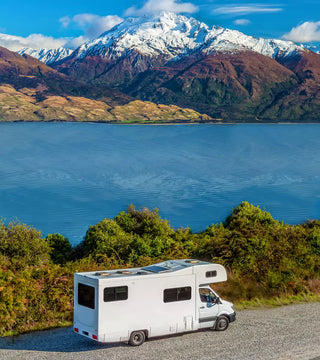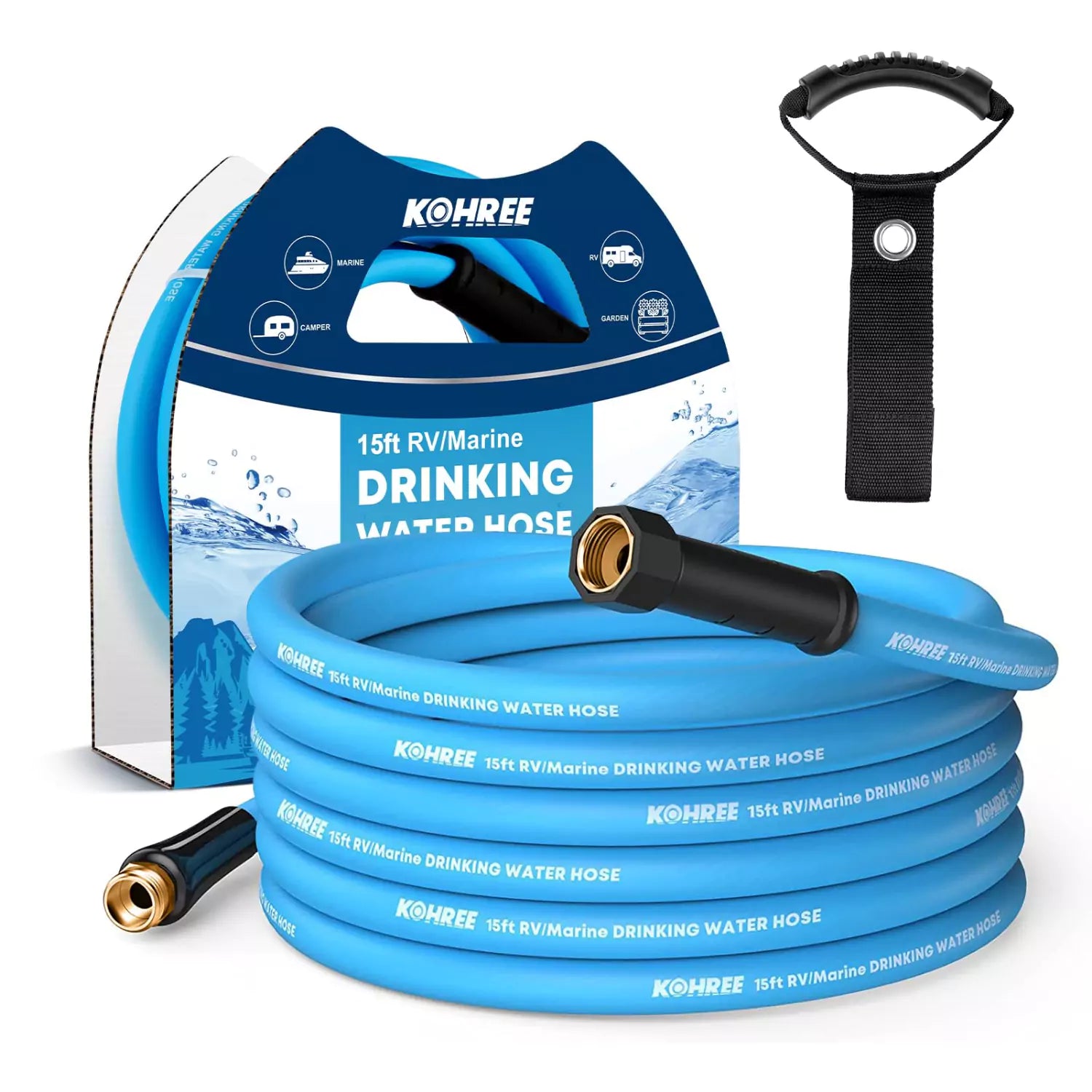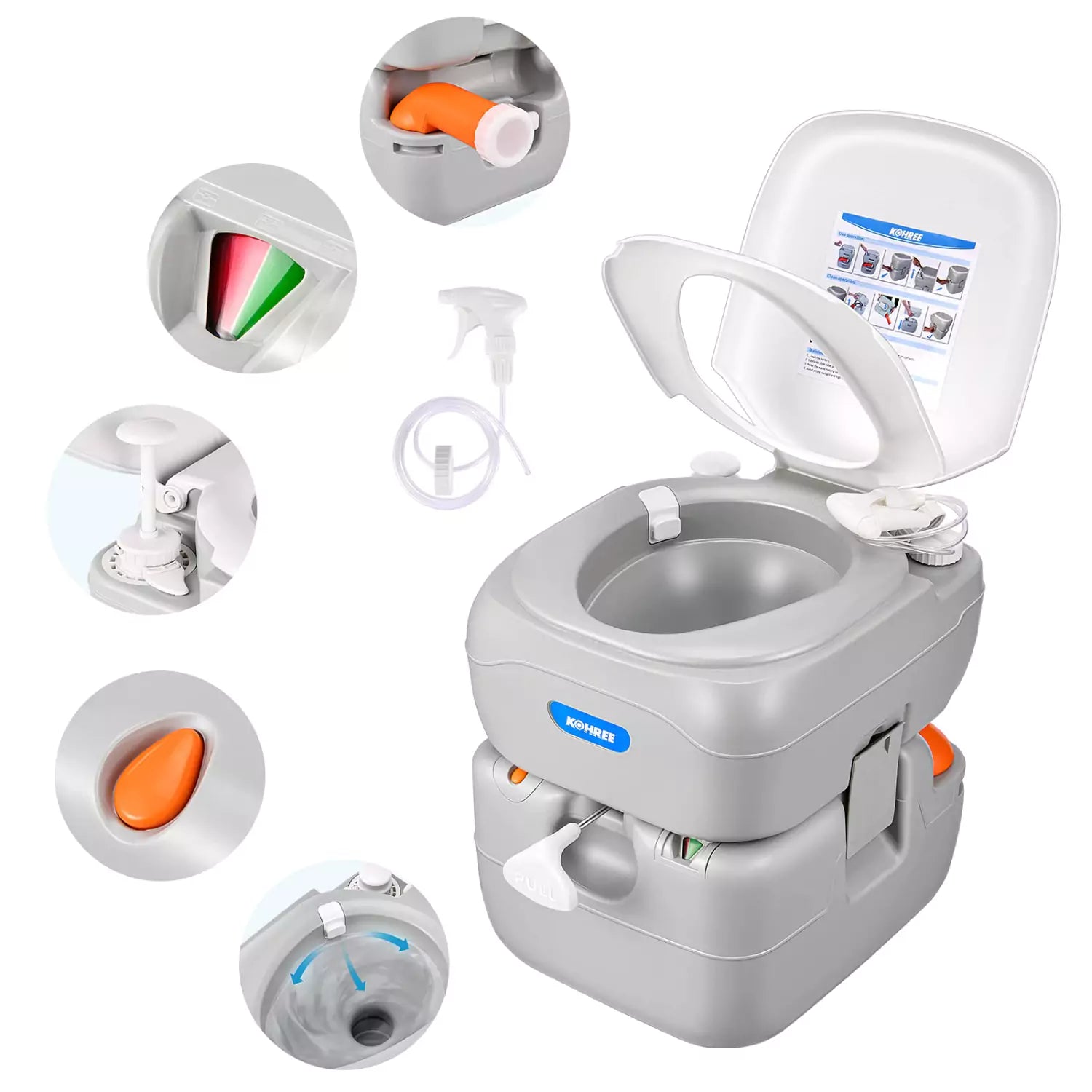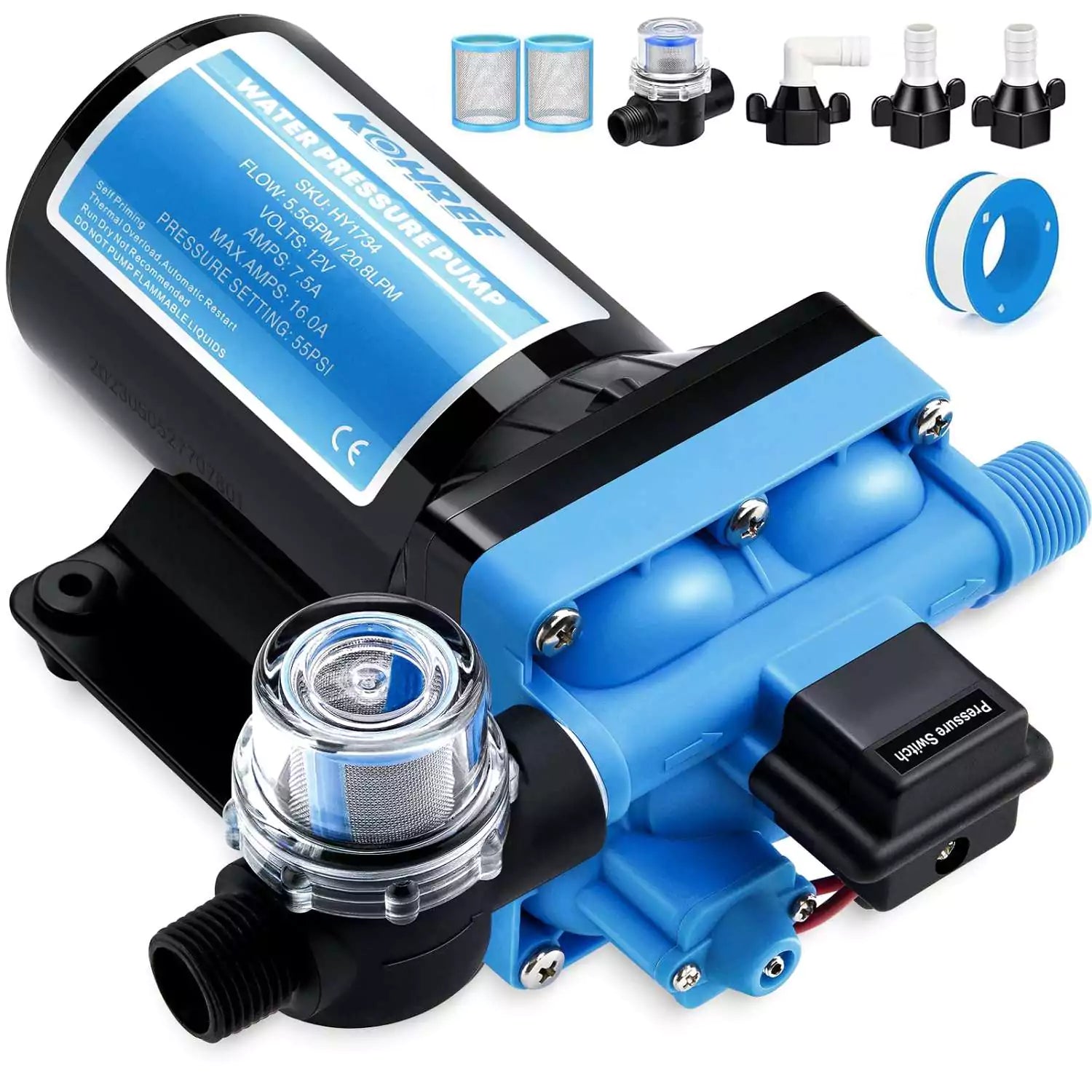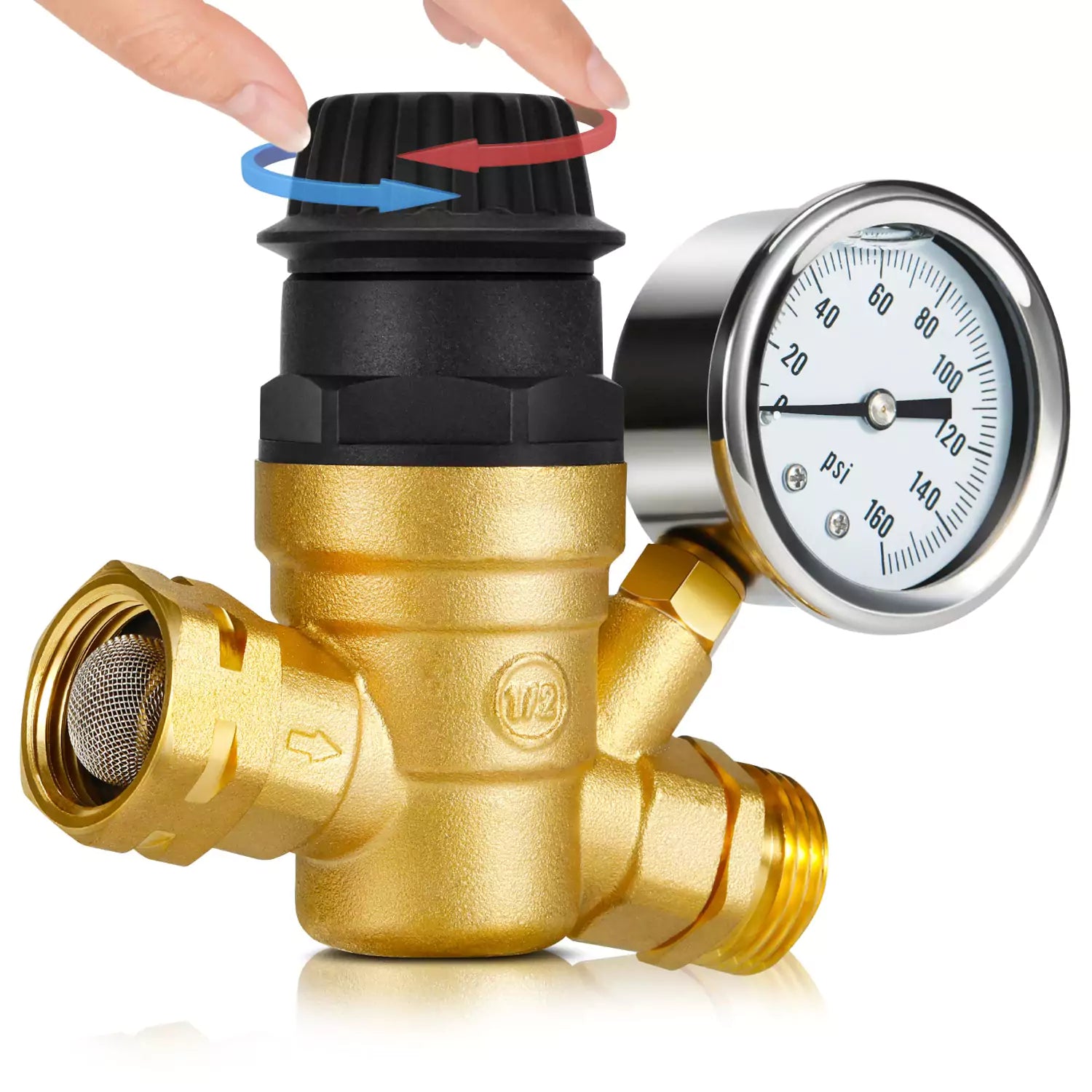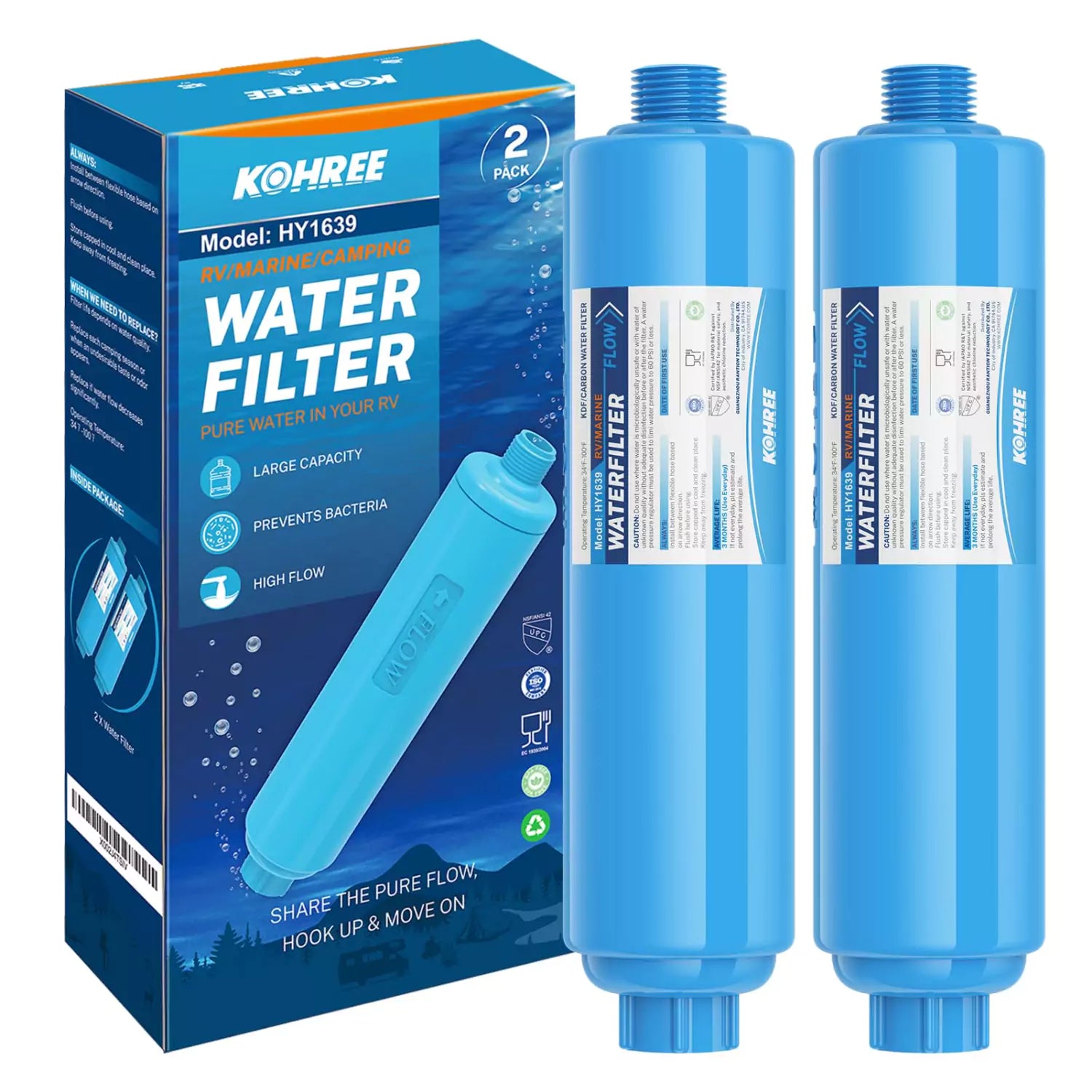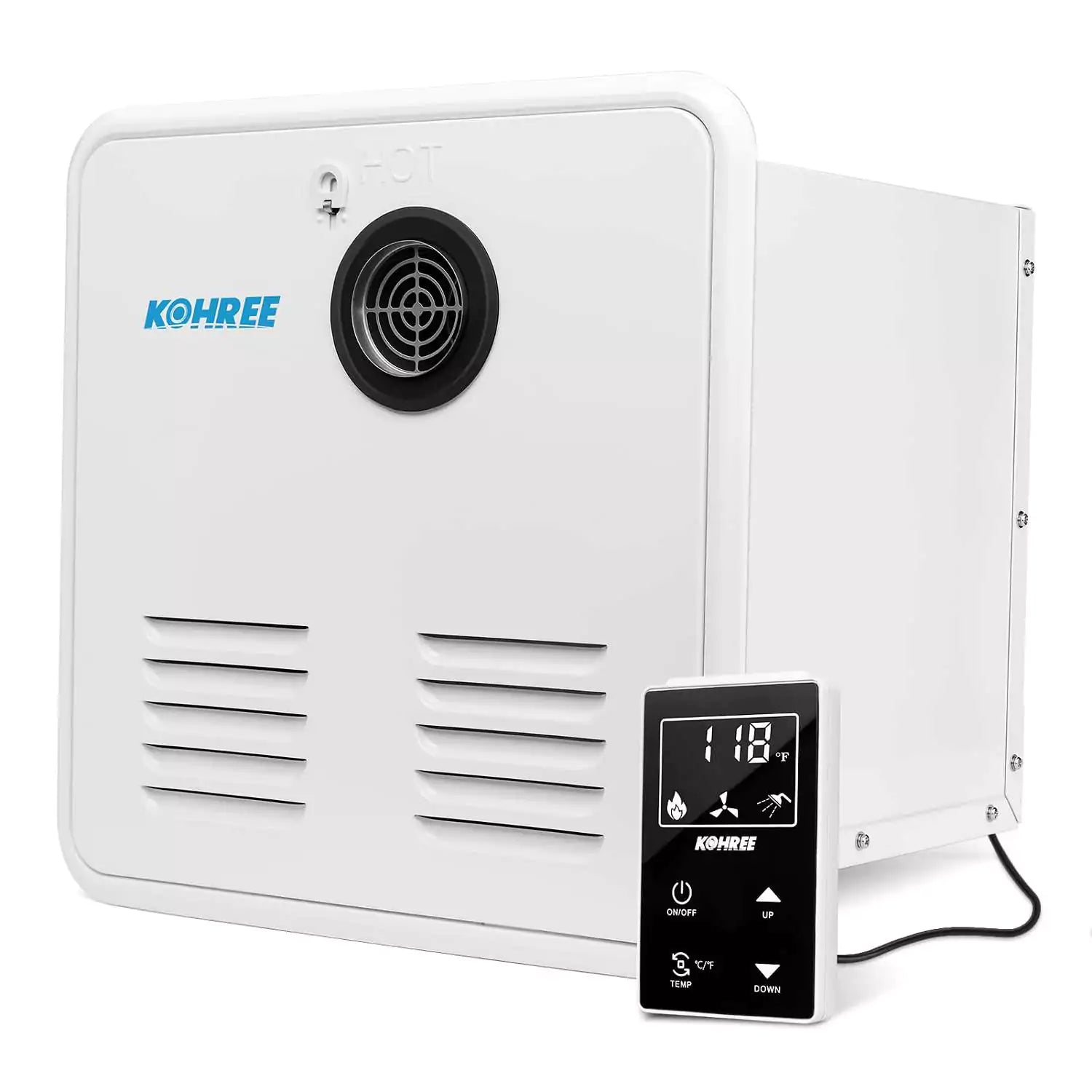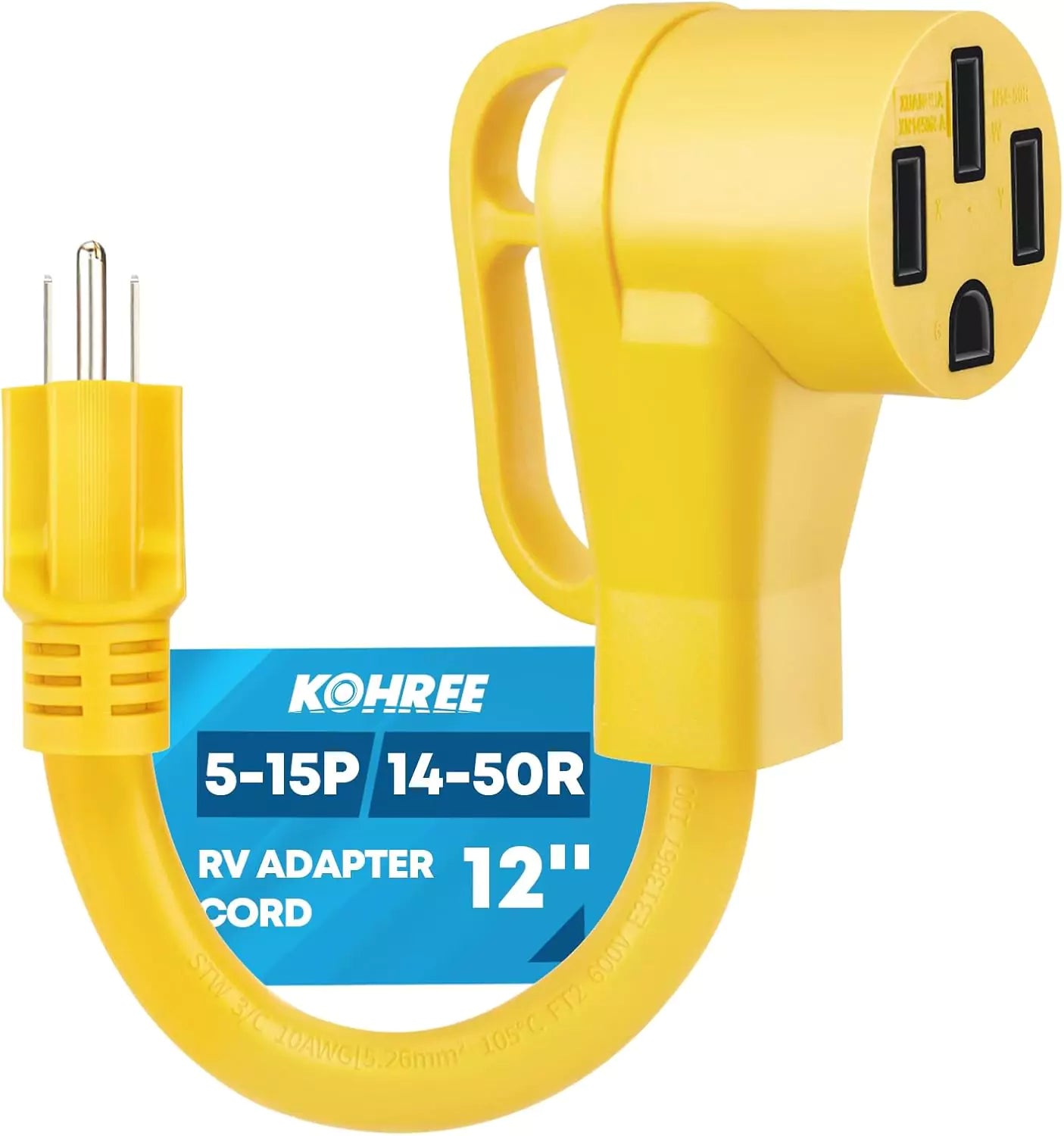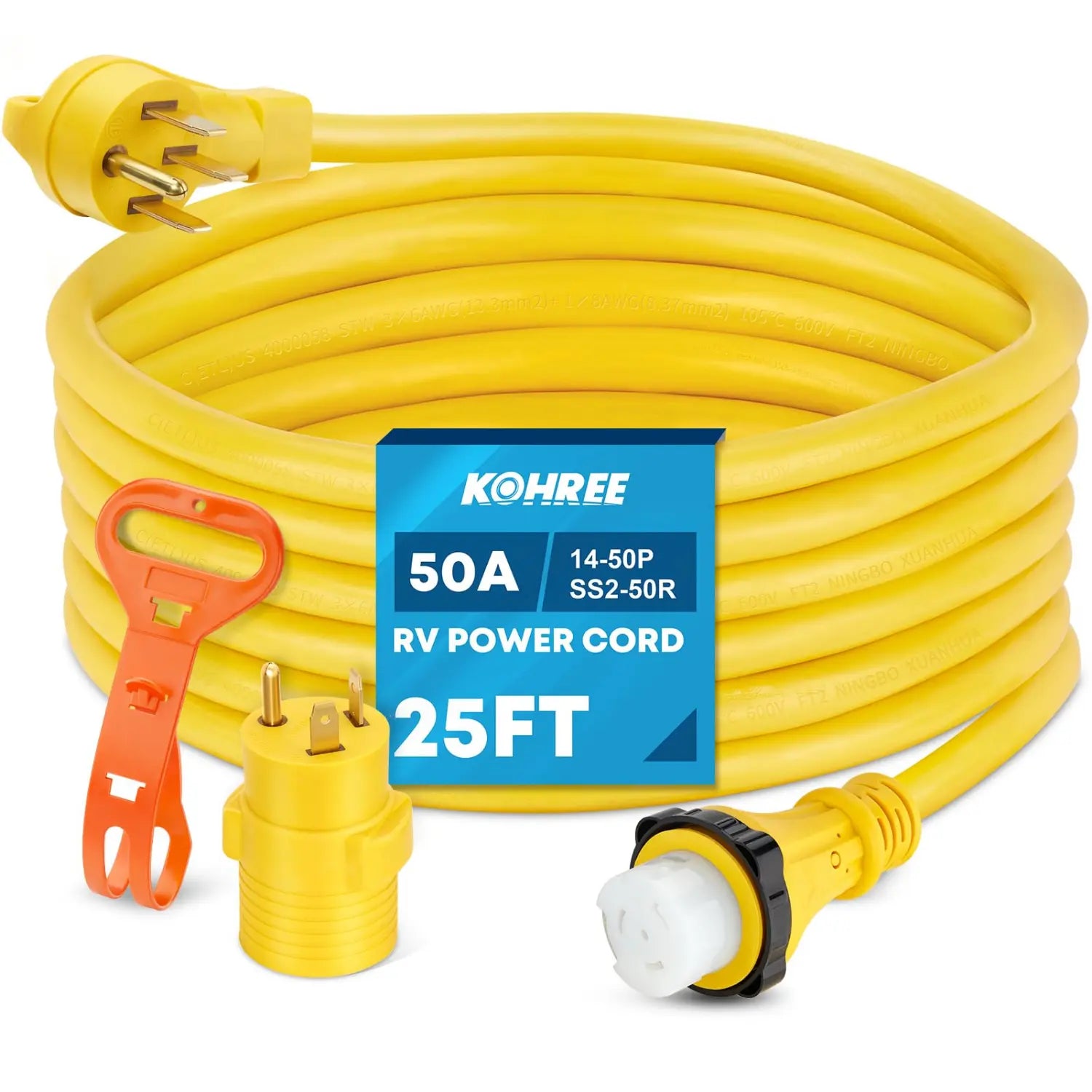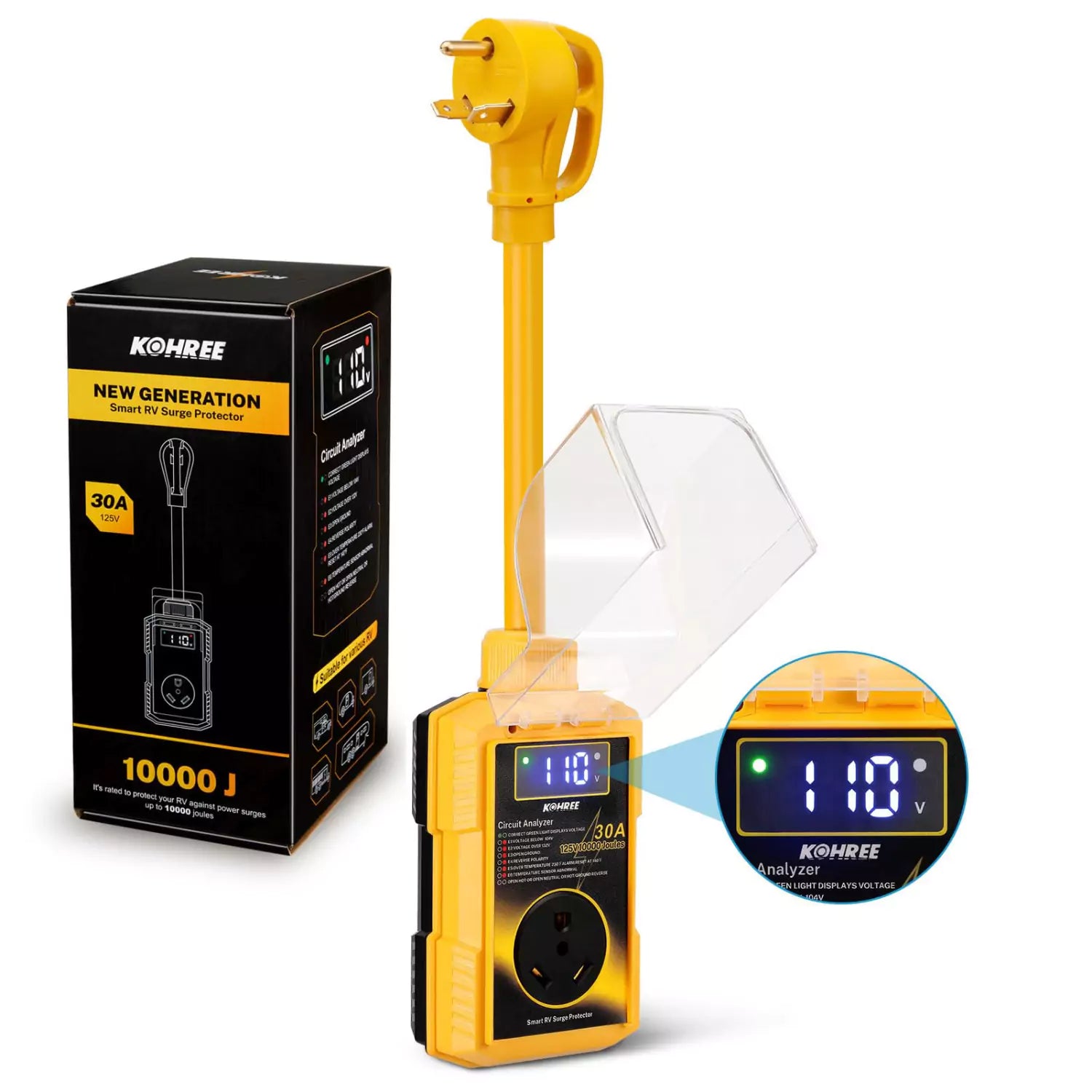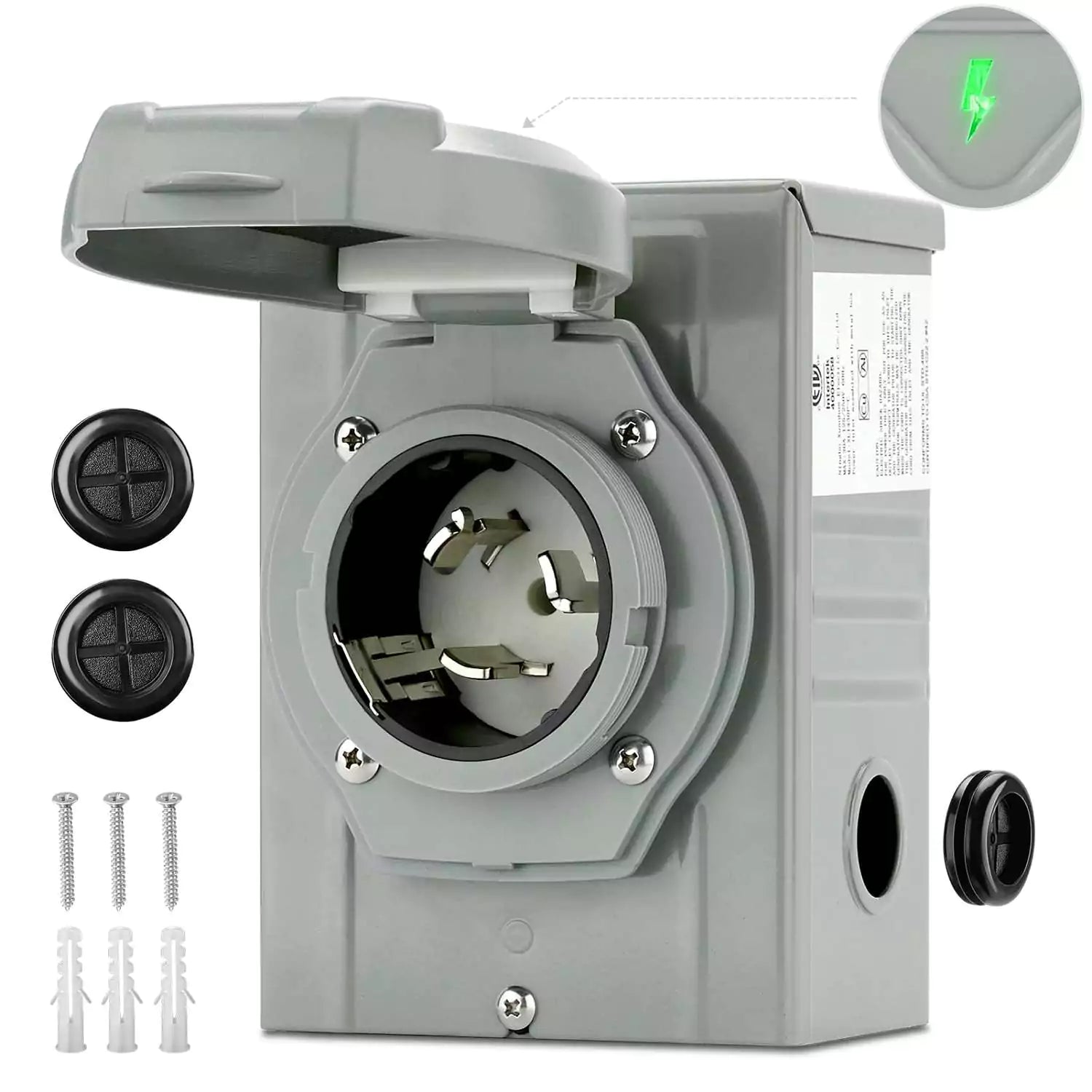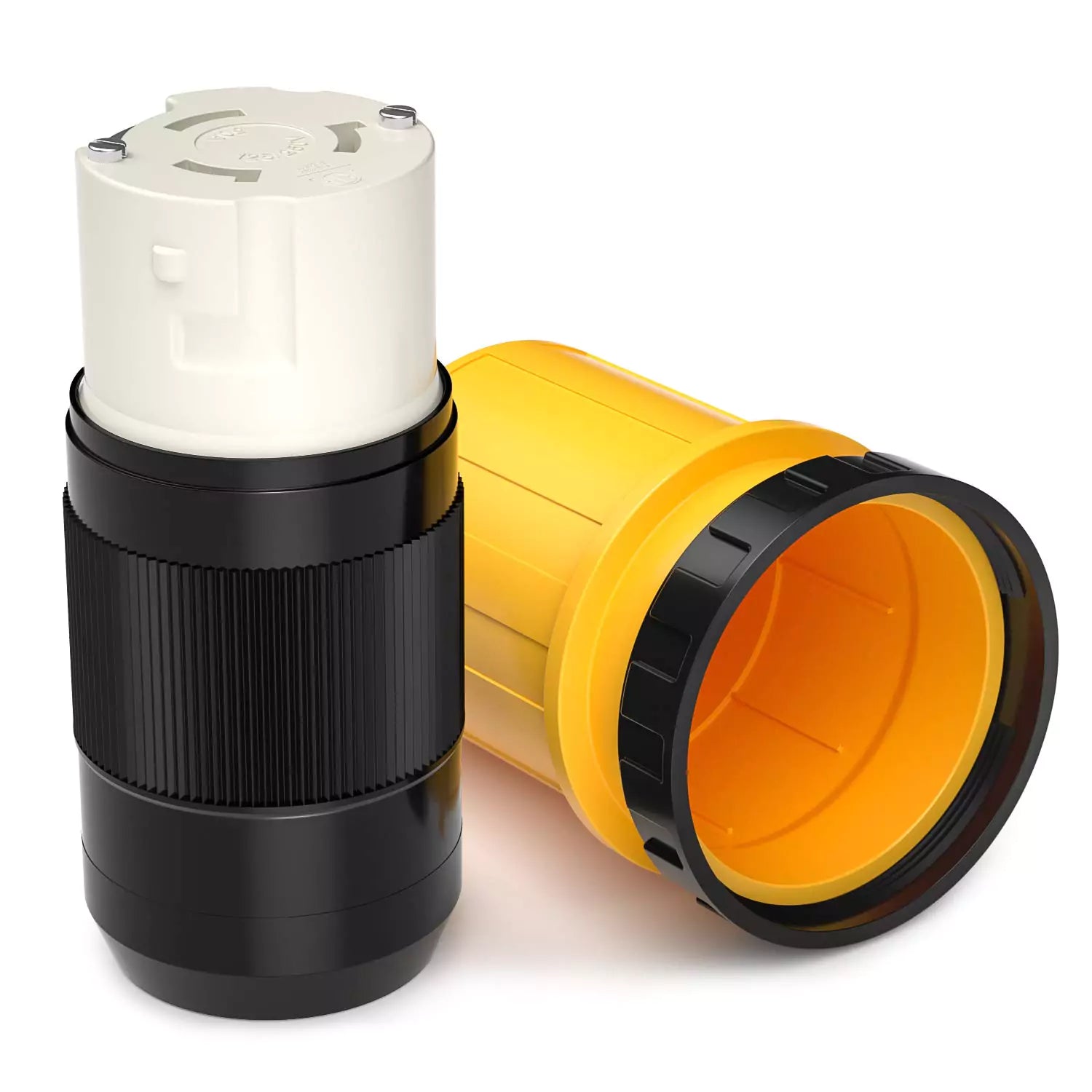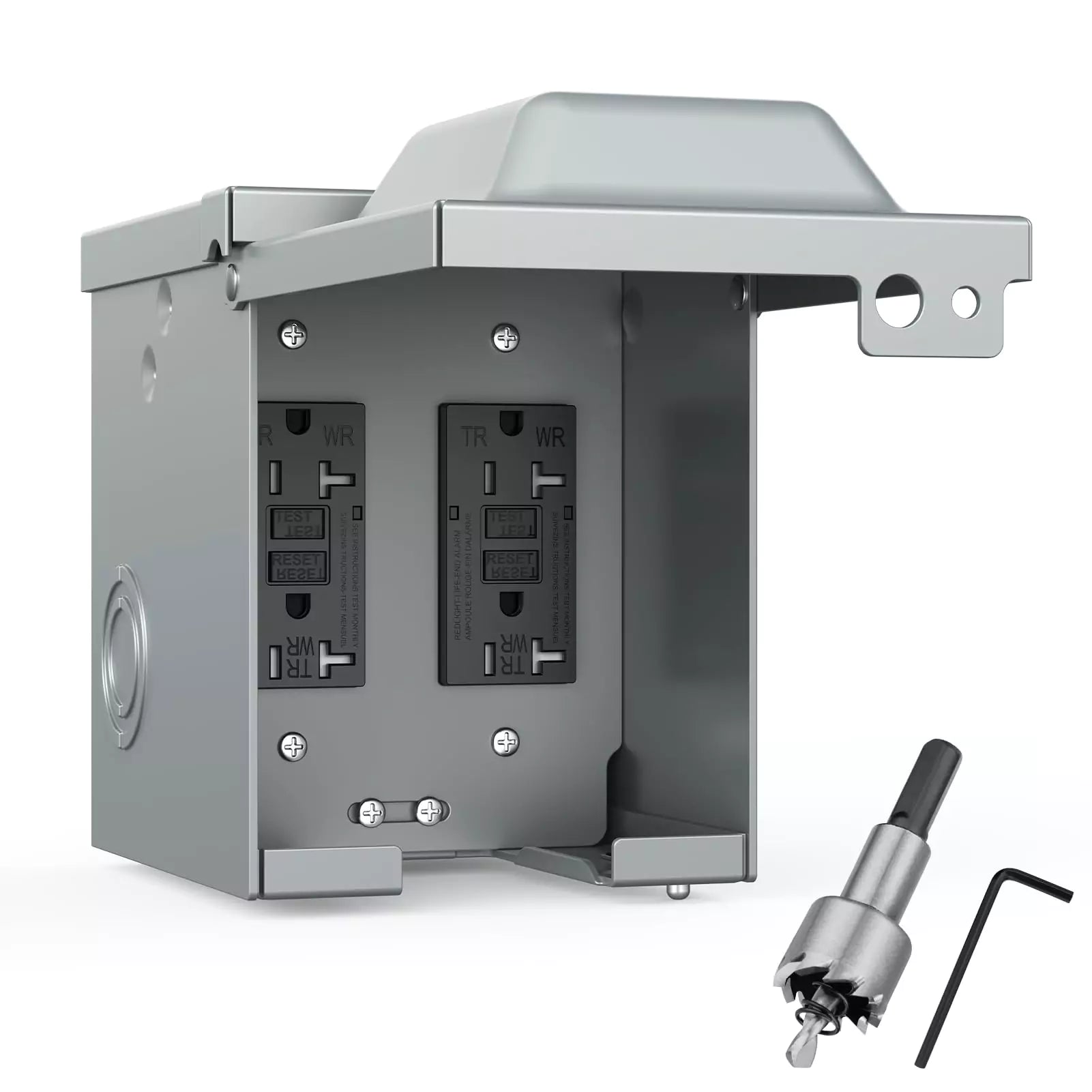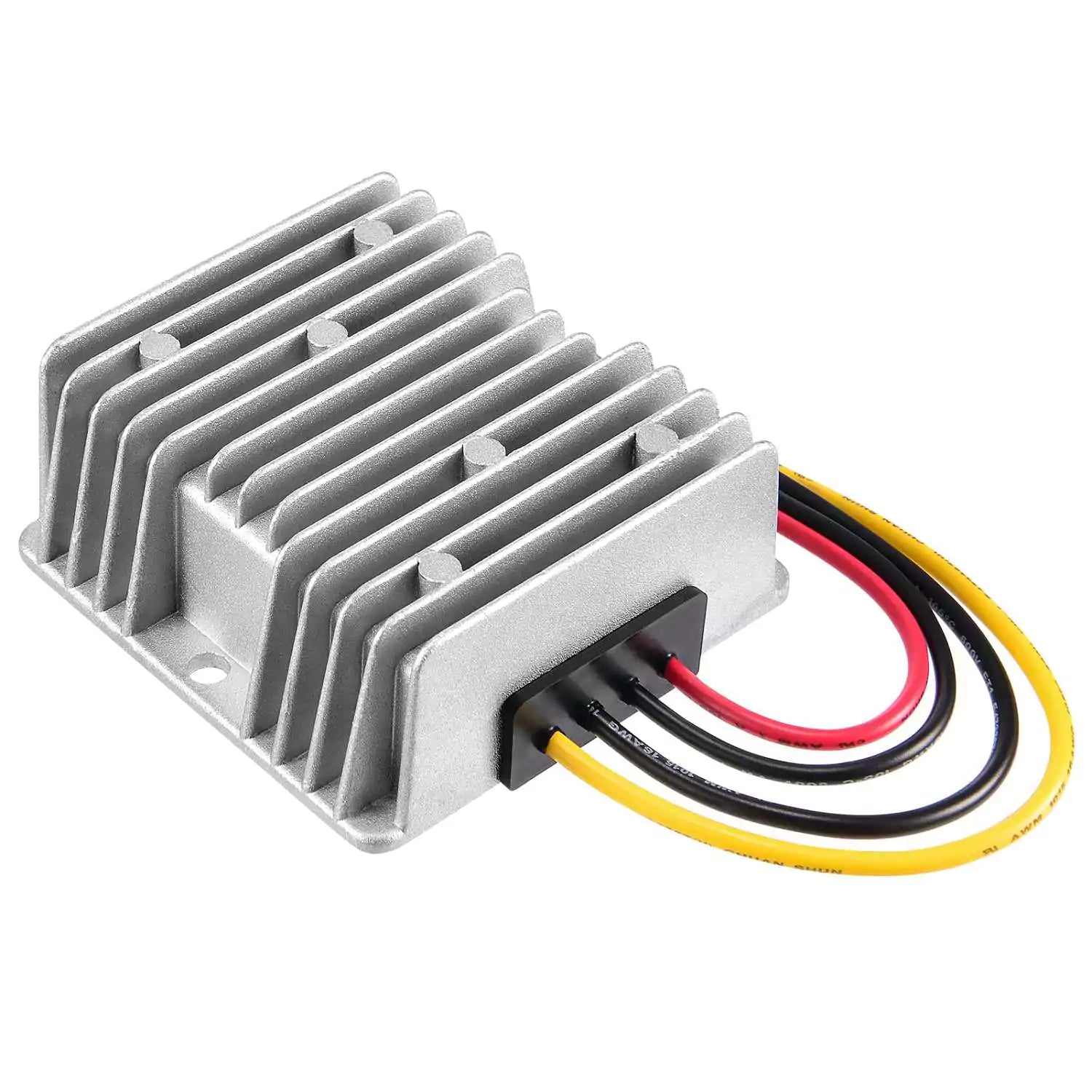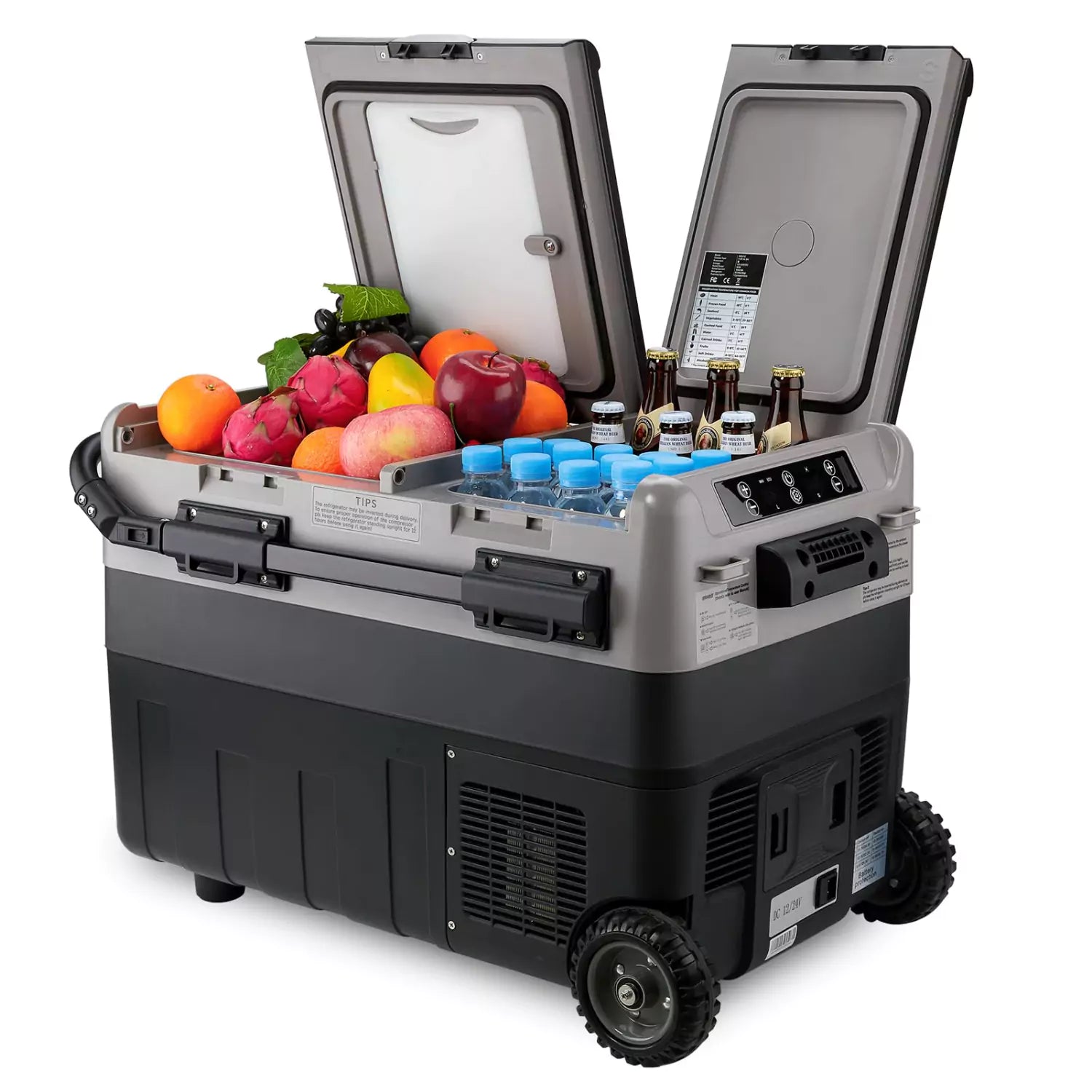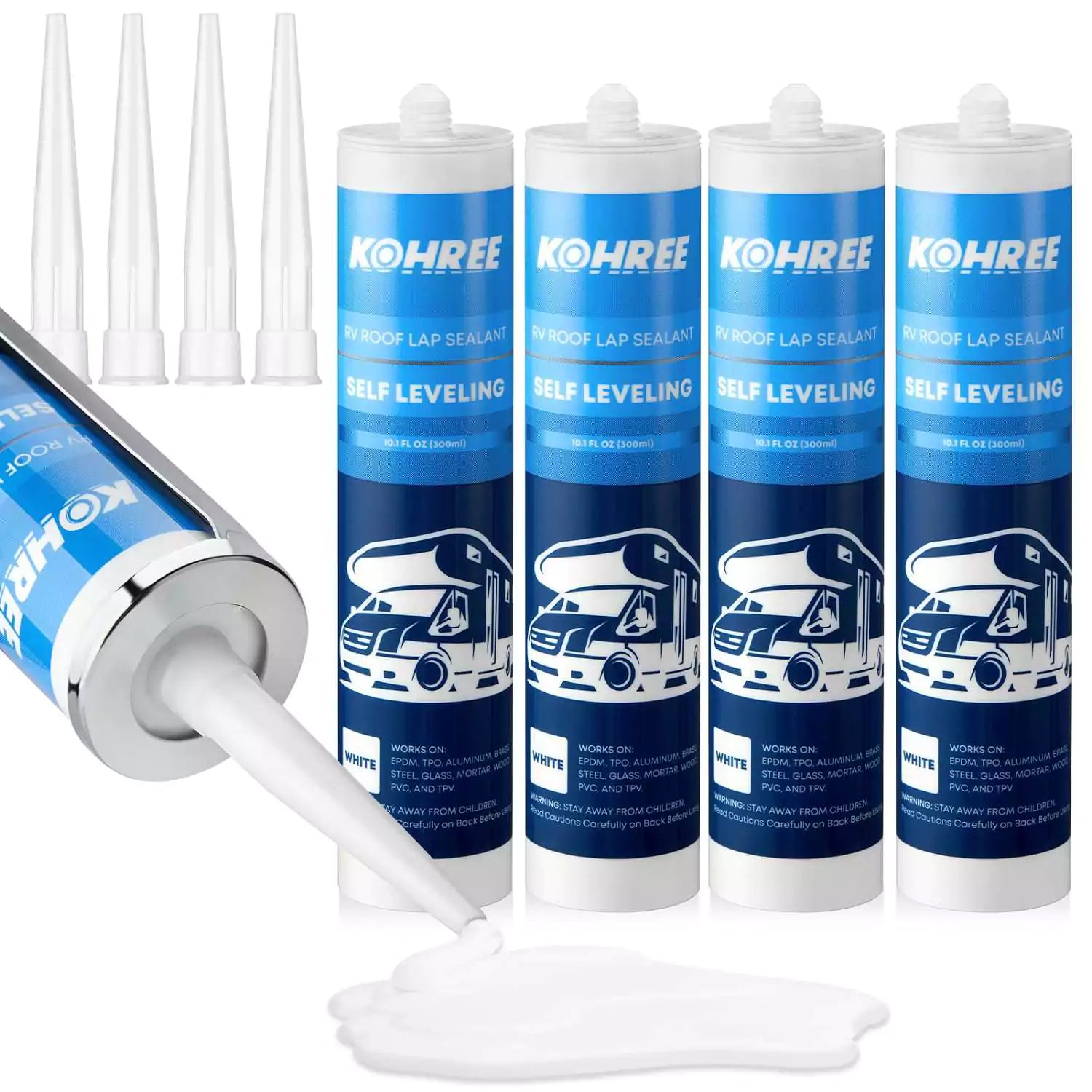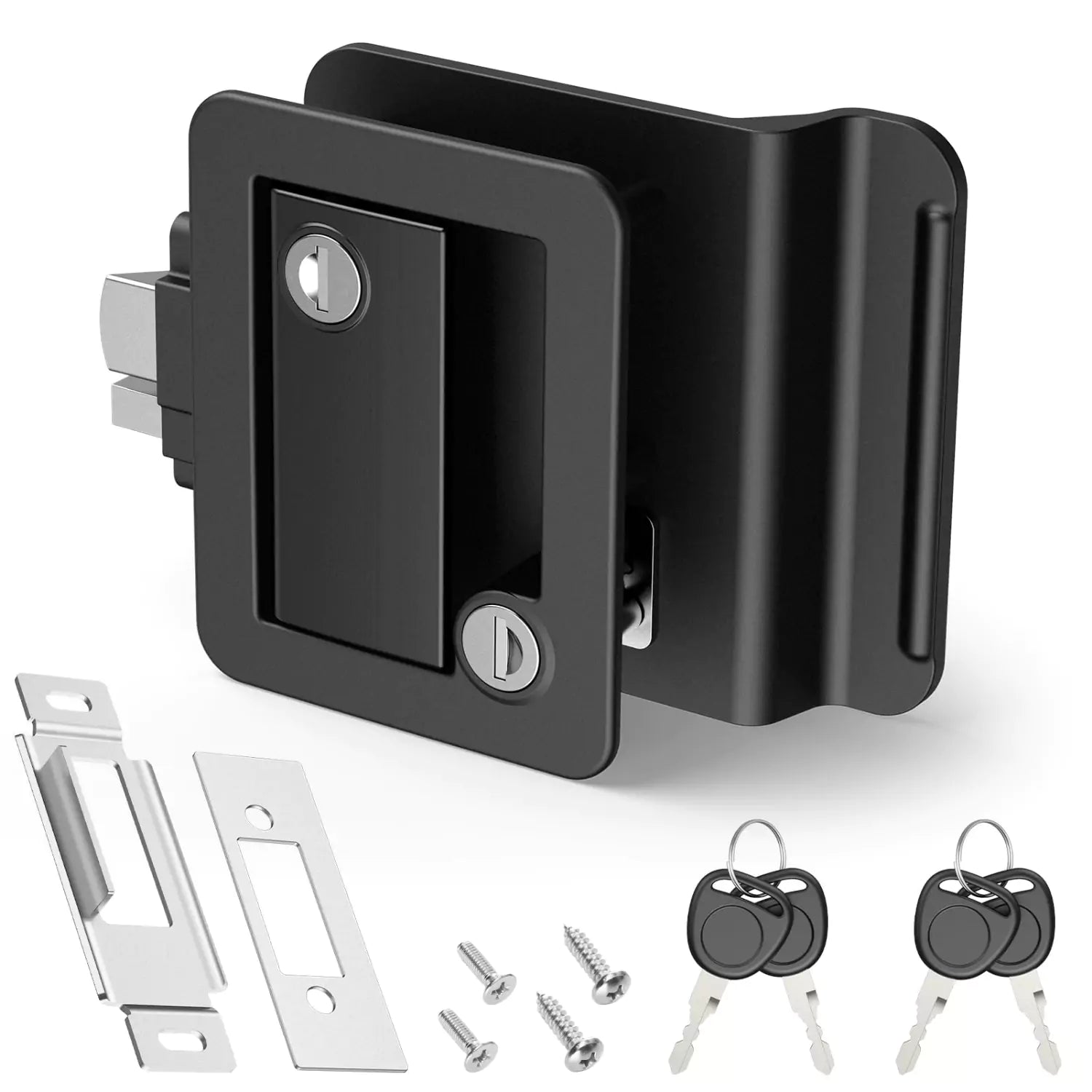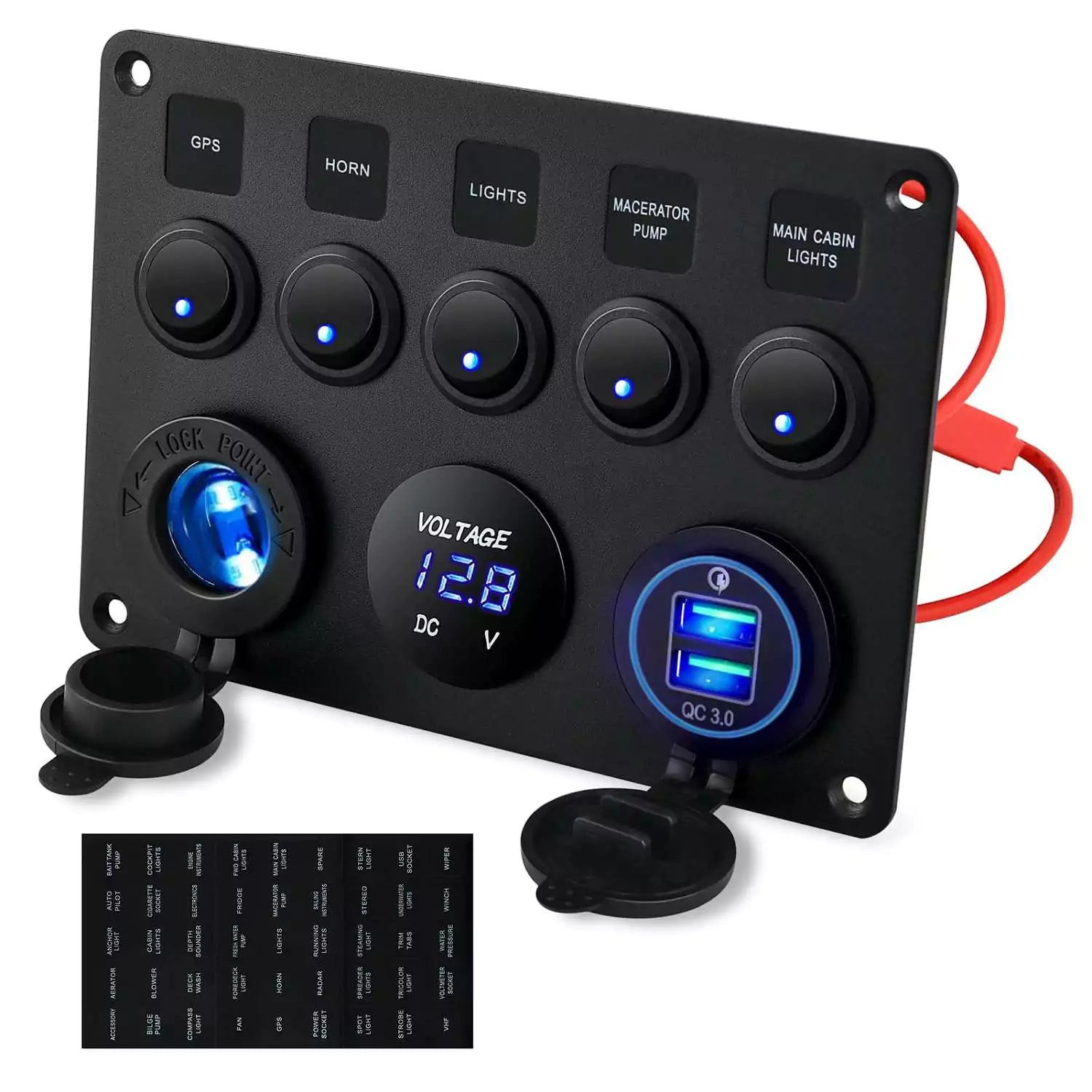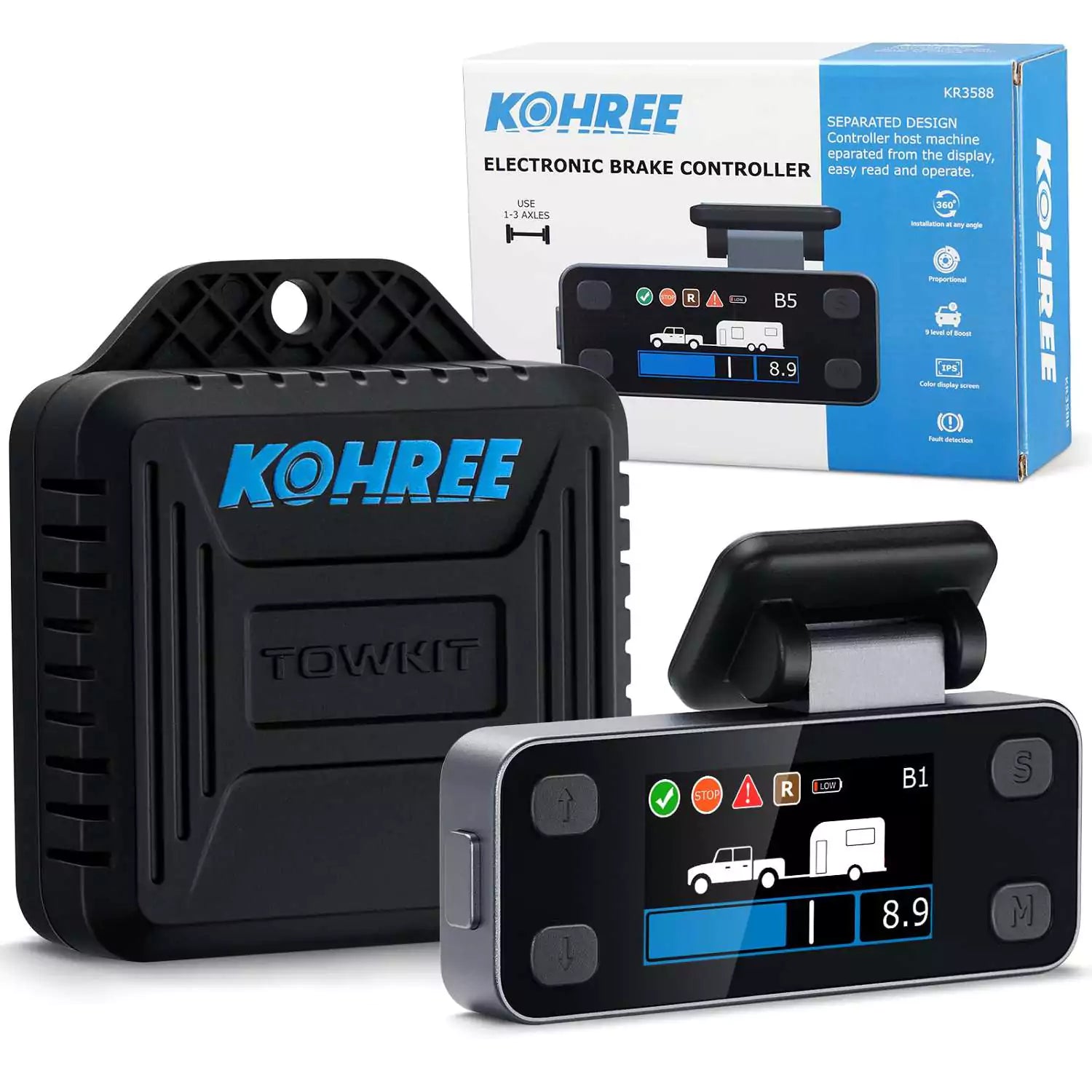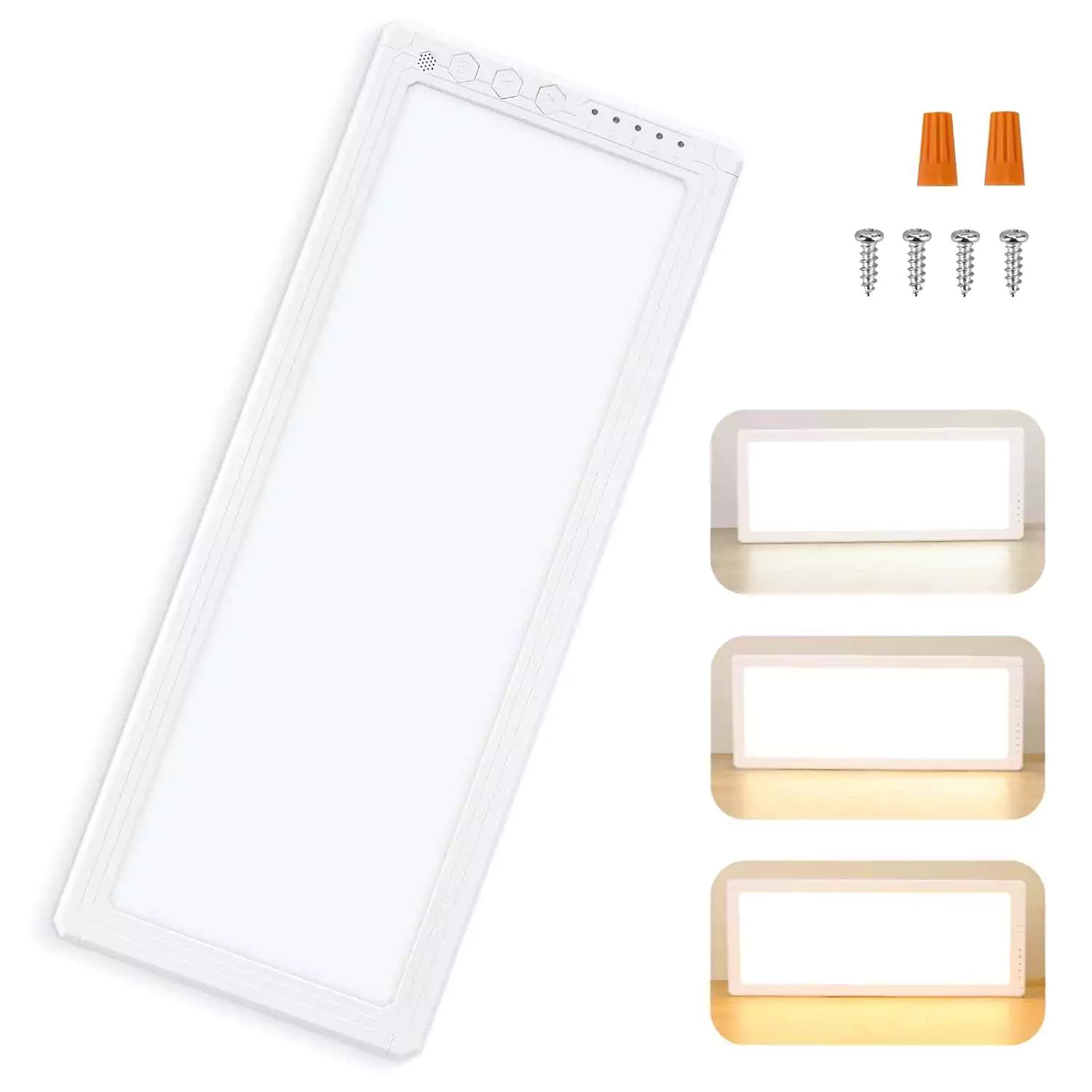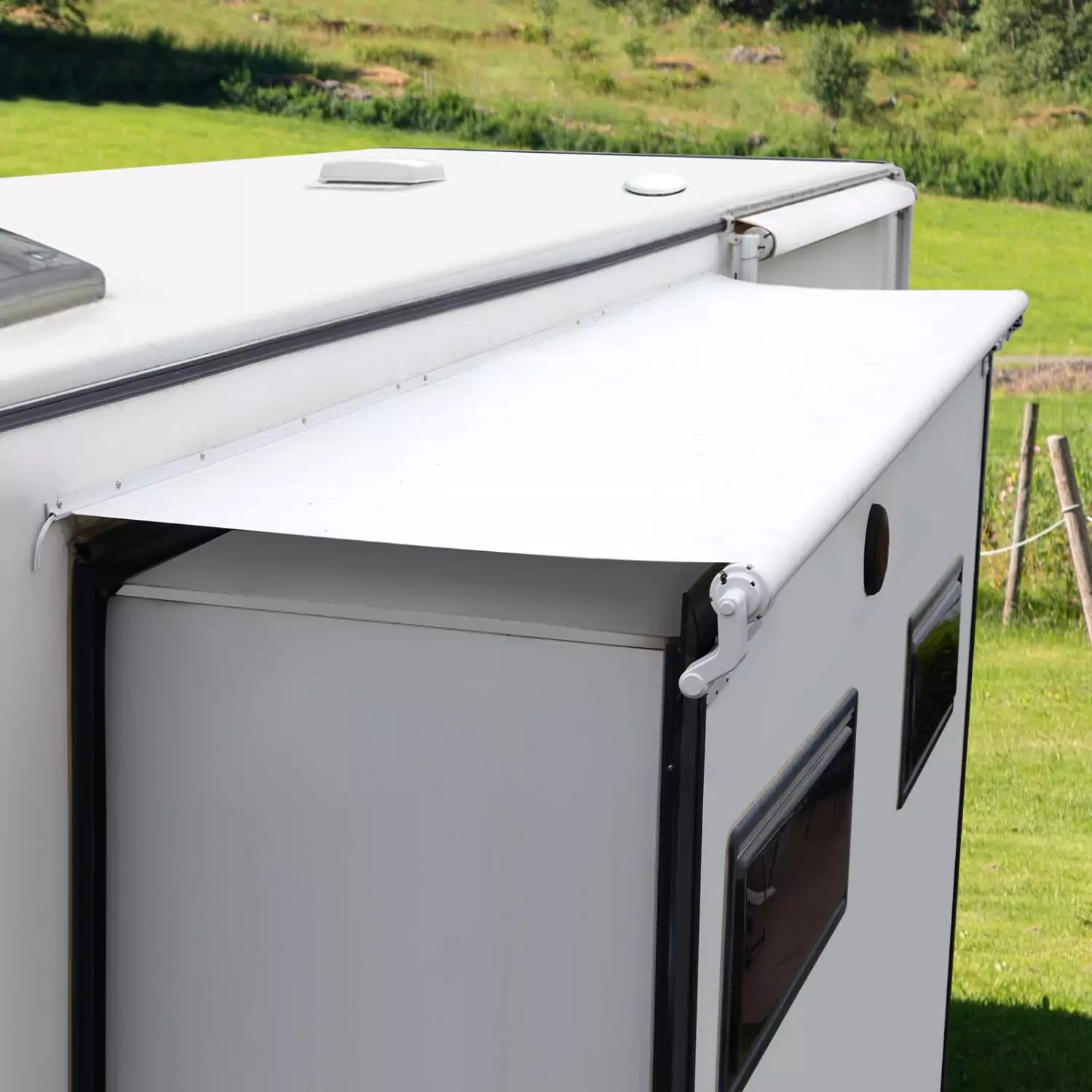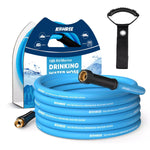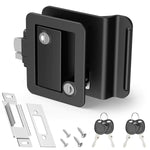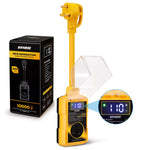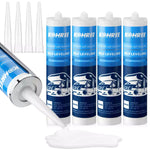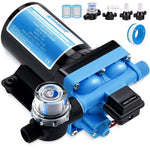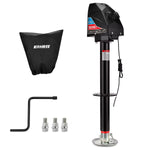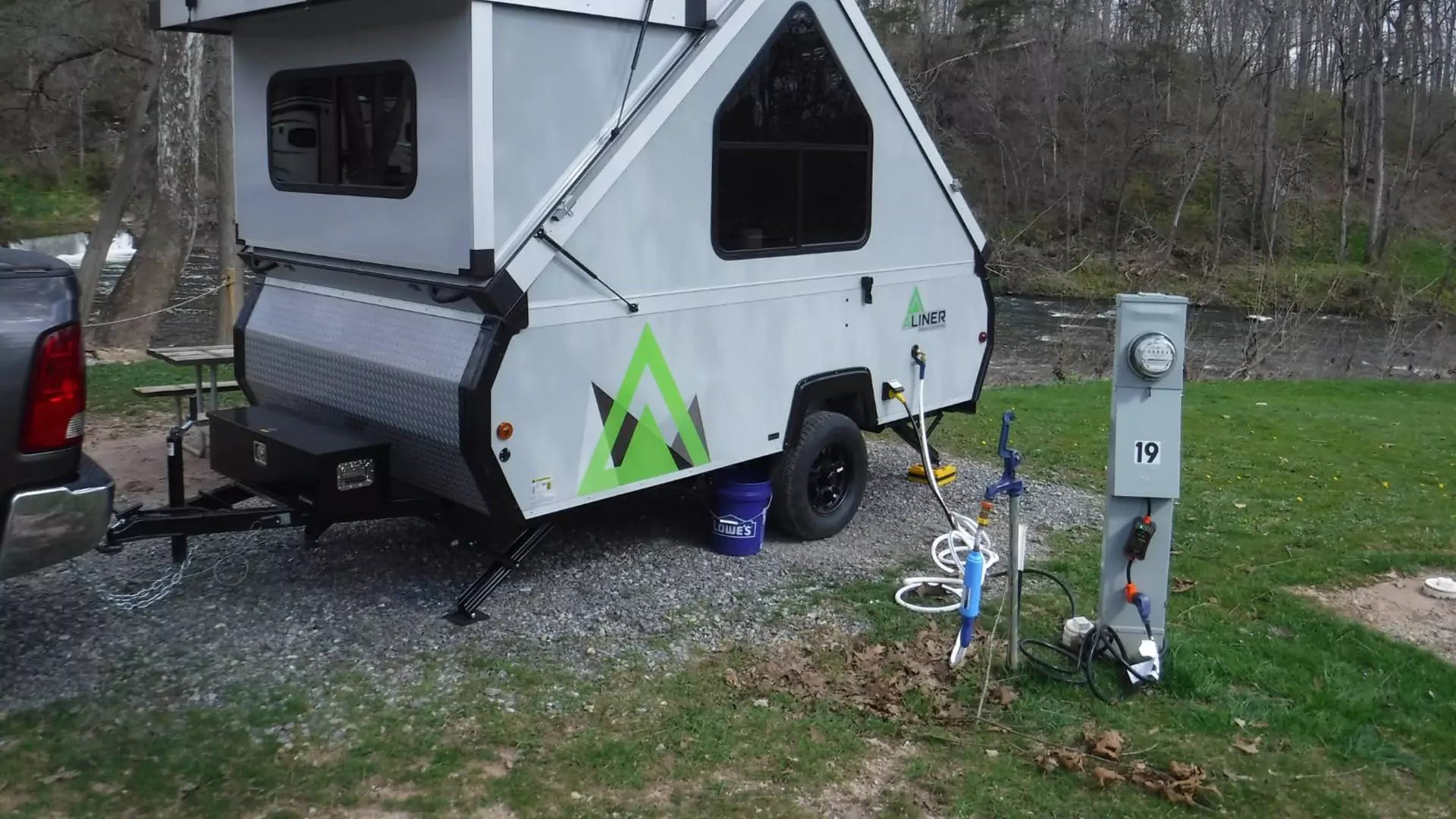The Foundation of Comfort & Safety on the Road
Adventurers, have you ever experienced that sigh of relief as you pull into your campsite after a long day's drive, only to have your relaxing hot shower turned into a chaotic spray by unexpectedly high water pressure, leaving you drenched? Just because water is labeled "potable" doesn't mean it tastes good or is free from sediment, chlorine, or other contaminants that can ruin your camping experience.
Most RV water connections are rated for a maximum of 40-60 PSI. The plastic fittings, flexible lines, and compact fixtures that make RV living possible are also what make your system vulnerable to pressure spikes and contamination.
But here's the good news: There's a foolproof solution that every experienced RVer swears by – the essential trifecta of protection. This non-negotiable combination includes a dedicated RV water hose, a quality RV water filter, and a reliable RV water pressure regulator. Think of these three components as your baseline armor against campground water chaos.

Your Quick-Start Guide Before You HookUp RV Water
Before we get into the nitty-gritty, let's cover the absolute must-dos. If you remember nothing else, remember this.
- Safety First, Always: When connecting to outdoor water sources at an unfamiliar campsite, never connect your water hose directly to the faucet without a regulator. Campground water pressure can vary wildly, with some sites delivering over 100 PSI - enough to burst your RV's water hose and plumbing system, potentially causing pipes to burst or water to leak inside your RV.
-
Essential protective measures for your RV water system:
- Use the Right RV Water Hose: Only a hose labeled "drinking water safe" or "potable" will do. Standard garden hoses can leach harmful chemicals and make your water taste like plastic.
- Filter Everything: Always use an RV water filter. It's your shield against sediment, chlorine, and other nasty contaminants, dramatically improving the taste, smell, and safety of your water.
- Adjust Water Pressure with Regulator: A quality brass RV water pressure regulator ensures the water entering your RV is at a safe, consistent pressure, typically around 40-60 PSI.
- Strain Relief is Key: Use a 90-degree brass elbow at your RV's city water inlet. This simple $5 fitting part prevents the weight of the hose from putting constant strain on the connection, preventing leaks and premature wear.
- Consider a Water Hose Splitter: A quality brass "Y" splitter at the spigot can be a lifesaver. It allows you to have your main RV water hookup while also having a separate connection for washing the dog, rinsing gear, or filling a bucket without disconnecting your rig.
- The connection sequence recognized by many RV enthusiasts:
When it comes to installing hoses, pressure regulators, and inline water filters, RV owners often focus on whether the water pressure regulator adds stress to the RV's connection point and if the water filter's position effectively purifies the water's taste and removes particulates. Based on the consensus of most RV owners, the most common and logical sequence is:
Campground Spigot → Water Pressure Regulator → Water Filter → RV Water Hose → RV City Water Inlet
This specific sequence ensures the regulator protects all your gear (your filter, your hose) and your RV from dangerously high pressure. The filter then cleans the water before it ever enters your hose or your rig's plumbing. This connection order balances equipment protection and pressure stability, helping your gear last longer.

Choosing & Caring for Your RV Water Hose
Why You Shouldn't Use a Garden Hose in Your RV?
Let's be crystal clear about why your regular garden hose is absolutely unsuitable for RV use. Garden hoses are manufactured with materials that leach harmful chemicals directly into your drinking water. We're talking about lead, BPA, phthalates, and other toxic compounds that standard vinyl and PVC hoses release, especially when heated by sun exposure.
The taste factor alone should convince you. Garden hoses impart that distinctive plastic or rubber flavor that no amount of filtering can completely eliminate. Your morning coffee will taste like you brewed it with pool water, and even your ice cubes will carry that chemical tang.
From a durability standpoint, garden hoses simply aren't built for the specific demands of RV life. They kink easily, crack in cold weather, and their fittings often fail under the constant connection and disconnection cycle of RV travel.

Selecting Your Perfect RV Water Hose
When you're ready to buy a proper hose, here's what to look for.
| Material |
Pros |
Cons |
Best for |
Recommend Product |
| PVC |
Economical, widely available |
Can be stiff in cold weather, prone to kinking |
Budget-conscious RVers in moderate climates |
Camco TastePure drinking water hose |
| Polyurethane |
Extremely flexible, lightweight, kink-resistant |
Higher price point |
Full-timers and those who value easy storage and performance in all weather |
Kohree fresh water hose |
| Hybrid |
Good balance of flexibility and durability |
Mid-range price, can be heavier than polyurethane |
A great all-around choice for most RVers |
Kohree drinking water hose |
Length Strategy
A 50-foot hose seems like a safe bet, but it can be bulky and heavy. A 25-foot hose is much easier to manage but might not reach a distant spigot.
💡 Pro Tip
The best strategy is to carry both a 25-foot and a 50-foot hose. Private campgrounds often have spigots within 25 feet, while state and national parks may require longer reaches. This provides ultimate flexibility for various connections and offers redundancy if one hose fails.
Diameter Dynamics
You'll encounter 1/2-inch, 3/4-inch, and 5/8-inch diameters, but currently, most RV water hoses utilize 5/8-inch diameters:
- 5/8-inch: This is the most common size, providing excellent water flow and pressure for great showers.
- 1/2-inch: This size is lighter and packs smaller, but it will result in a slightly lower flow rate. It's a decent option for those extremely tight on space.
- 3/4-inch: Offering the highest flow rate, this size is ideal for maximizing water pressure, though its increased bulk makes it less common for RV applications.
Trustworthy Connector
This is where cheap hoses show their true colors. Look for crush-proof brass or aluminum fittings with quality gaskets. Those plastic connectors? They'll crack, leak, and leave you scrambling for a hardware store in the middle of nowhere.
Hose Hygiene & Longevity
A quality hose can last for years with proper care.
- The Drain Ritual: Always, always drain your hose completely after disconnecting it. Hold one end up high and walk it out. Trapped water breeds bacteria, mold, and mildew and can damage the hose lining over time.
- Coiling & Storage: Coil your hose neatly and secure it with a hook-and-loop strap. Store it in a clean, dedicated bin or storage bag. Using hose end caps is a fantastic idea to keep dirt, debris, and curious insects from getting inside.
- Winter Warnings: If you camp in freezing temperatures, a standard hose will freeze solid and likely burst. You'll need to either disconnect and drain it every night or invest in a heated RV water hose.
🧐 Looking for Long-term Use RV Water Hose?
Available in glossy and matte versions, our drinking water hoses for RV have passed the CA65 safety certifications, ensuring your RV water safety.
Shop Best Kohree Potable Hose Now
Clarifying the RV Water System Protector - RV Water Pressure Regulator
What It Is & Why It's Non-Negotiable
Think of your RV water pressure regulator as a security guard standing at the entrance to your RV's plumbing system. Its job is simple but crucial: Prevent dangerously high pressure from entering your delicate RV plumbing.
The mechanics are elegantly simple. Inside the regulator, a spring and diaphragm system monitors incoming pressure and restricts flow when pressure exceeds safe levels. When campground pressure tries to surge past your regulator's setting (typically 40-50 PSI), the device automatically reduces flow to maintain safe output pressure.
While most major RV campgrounds have stable water pressure, connecting to an unknown source, especially one with potentially unstable pressure (up to 100 PSI), can easily exceed your RV's plumbing limits.
The cost of ignoring this protection is devastating. We're talking about burst pipes hidden behind walls, cracked fittings in inaccessible locations, flooded RV interiors, thousands in repair costs, and ruined vacations. A $30 regulator prevents all of this.
Navigating Water Pressure Regulator Options
-
Pre-set Regulators
Pros: These are simple, affordable, and preset to a safe pressure, usually around 40-50 PSI. They are fantastic for beginners because you can't mess them up.
Cons: You can't adjust them, and some basic models can restrict water flow, leading to a less-than-satisfying shower.

-
Adjustable Regulators (Often with a Rotatable Lid)
Pros: These are a great upgrade. They let you dial in your preferred pressure (50-55 PSI is great for showers!) and have a gauge so you can see exactly what's going on. They are typically designed for higher flow and are a worthwhile investment.
Cons: Cost a bit higher and have more parts that could potentially fail.
Material Matters: Insist on lead-free brass. It's durable, safe, and will last for years. Avoid cheap, shiny pot-metal versions that can corrode and fail.
Flow Rate Fundamentals: High-flow regulators maintain better water pressure for showers and multiple fixtures. Look for regulators labeled "High-flow," often indicated by GPM (Gallons Per Minute), to ensure a better water experience.

Why Do You Need & How to Use an RV Water Filter
"Potable" Doesn't Mean Perfect
"But the campground water is potable!" you might say. Sure, it probably won't make you sick immediately, but that doesn't mean it's clean or tastes good. The water might still contain sediment that clogs your fixtures, chlorine that makes everything taste like a swimming pool.
Water quality varies dramatically between campgrounds. Some are supplied by well-regulated municipal systems, while others rely on local wells with inconsistent treatment. Your filter serves as the final line of defense, protecting both your health and your RV's plumbing system from sediment that can clog faucet screens and damage water pumps.

Filter Stages Explained
When choosing an RV water filter, understanding the different stages and what they filter out is key to ensuring clean, safe drinking water.
Micron Rating: The Size of Filtration
The micron rating is crucial; it indicates the size of particles a filter can capture. Smaller numbers mean finer filtration:
- 20-micron filters are your first line of defense, efficiently catching larger particles like sand, rust, and visible sediment.
- 5-micron filters offer a finer level of filtration, removing smaller sediments and some microscopic contaminants.
- 1-micron filters provide the highest level of filtration for common RV use, capable of capturing most bacteria and cysts (like Giardia and Cryptosporidium).
Filter Types and Their Functions
Beyond micron ratings, filters also differ in their primary material and purpose:
- Sediment filters (measured in microns, as explained above) are designed specifically to remove physical particles from your water, protecting your RV's plumbing and other filter stages.
- Carbon filters are essential for improving water quality. They typically come in two main types:
- Granular Activated Carbon (GAC) filters are excellent for basic taste and odor improvement, effectively removing chlorine and other common unpleasantnesses.
- Carbon Block filters offer superior contaminant reduction, as their denser structure can trap a wider range of chemicals, pesticides, and volatile organic compounds (VOCs) in addition to improving taste and odor.
Specialized cartridges are available for specific concerns. These might include:
- KDF media for reducing heavy metals (like lead and mercury) and controlling bacterial growth.
- Structured matrix designs specifically engineered for advanced cyst removal or other targeted contaminants.
Understanding Common RV Water Filter Types
Not all filters are created equal. Once you understand your RV's specific filtration needs, here's a breakdown of two common types of RV water filters to help you choose the best system:
-
Inline Filters (Standard Disposable Blue Ones):
Pros: These are the most common type. They are simple to use (just screw them into the hose line), affordable, and compact.
Cons: They offer basic filtration, primarily reducing sediment and chlorine taste/odor. Their lifespan is shorter, and they can reduce water flow more than larger systems. Pay attention to the micron rating - a smaller number means finer filtration.

-
Canister Filter Systems (Single or Multi-Stage):
Pros: This is a serious upgrade. These systems use larger, replaceable filter cartridges that offer vastly superior filtration. You can choose different cartridges for different needs, creating a multi-stage system (e.g., a sediment pre-filter followed by a high-end carbon block for taste, odor, and cysts). They have a much longer life per cartridge and maintain better water flow.
Cons: They have a higher initial cost and take up more space. The setup and filter changes are slightly more involved but still very easy.
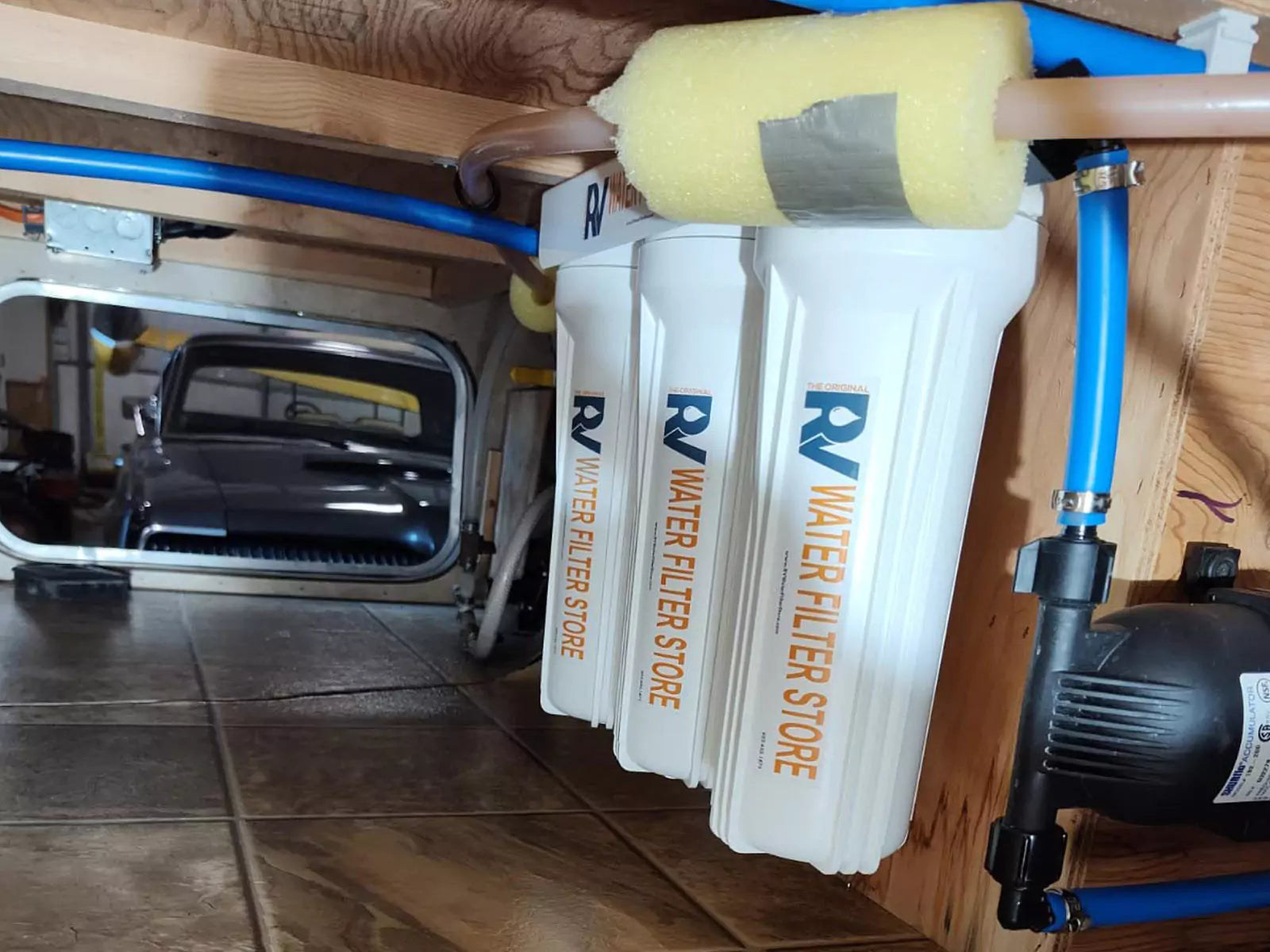
Key Maintenance Tips for Effective Use of the RV Water Filter
Does a filter reduce pressure? Yes, every filter causes a small pressure drop. However, in a well-maintained system with a clean filter, this drop is usually unnoticeable.
If you suddenly experience very slow water, your filter is likely clogged and screaming to be changed. That means you are drinking unfiltered water!
Your water filter is only as good as its last replacement. Generally, you'll need to replace water filter cartridges every 3-6 months, but don't just rely on the calendar. Base your replacement schedule on your actual usage and the local water quality.
If you're in an area with hard, sediment-heavy water, you'll need to change it more often. The tell-tale signs of a failing filter are a noticeable drop in water flow, discolored water, or the return of bad tastes or smells.
Step-by-Step Guide to a Flawless RV Water Hookup
Now let's put it all together with the foolproof step-by-step RV water hookup guide that ensures perfect results every time.
Recognized Connection Order
Remember this order: Campground Spigot → Water Pressure Regulator → Water Filter → RV Water Hose → RV City Water Inlet
Why this order? Just like I said before. The regulator goes first to protect everything downstream - your filter, your hose, and your RV. The filter goes next to ensure that only clean water enters your hose and rig.
Tools of the Trade
- Your essential trifecta: Regulator, Filter, and Hose(s)
- A 90-degree brass elbow
- A "Y" hose splitter (optional, but recommended)
- A handful of spare hose washers (they wear out and are the #1 cause of leaks)
Step-by-Step Perfection
-
Spigot Inspection: Before connecting anything, run water from the spigot for 30 seconds. Look for rust, debris, discolored water, or excessive pressure spray that might indicate problems.
-
Regulator Attachment: Connect your water pressure regulator directly to the campground spigot threads. Hand-tighten it securely. If it's an adjustable model, ensure it's set to your desired pressure (45-55 PSI).
-
Attach to the Regulator Outlet. Ensure the flow direction arrow points toward your RV. Many filters have specific inlet/outlet orientations.
-
Hose Flushing: Connect your RV water hose to the outlet of the filter. Before connecting to your rig, run water through the entire assembly (regulator, filter, hose) onto the ground for a good 1-2 minutes. This flushes any dust or debris from the hose and saturates the new filter media.
-
RV Connection: When connecting to your RV, consider using a 90-degree brass elbow adapter. First, screw this elbow onto your RV's "City Water" inlet. This significantly reduces the stress on your water hose where it connects to the inlet. Next, connect the other end of your water hose to the elbow. Always check that the rubber washer is present and in good condition—this simple step prevents 90% of connection leaks.
-
The Leak Test: Slowly open the spigot fully and immediately inspect every connection point. Look and feel for leaks at the spigot to regulator, regulator to filter, filter to hose, and hose to RV water inlet connections.
-
System Purging: Head inside your RV. Open the cold water faucet at the kitchen sink (or whichever is farthest from the water inlet). Let it run until it stops spurting and you have a smooth, steady stream. This pushes all the air out of the lines. Repeat briefly for the hot water faucet to ensure the lines to the water heater are full.

You now have a secure, safe, and clean freshwater inlet connection!
Facing the Truth of RV Water System
Fresh Water Tank vs. City Water
Your RV has two water modes: pressurized city water (what we've been discussing) and fresh water tank operation using your internal water pump.
City water bypasses your tank and pump, providing unlimited water at campground pressure (which should be regulated by your RV's system).
Alternatively, you can fill your onboard freshwater tank and use your RV's water pump. This is great for boondocking or if you're at a campground with questionable pressure, as your pump will give you consistent flow.
The downside, however, is that you'll eventually run out of water and need to refill your freshwater tank periodically.
Sanitizing Your Sanctuary: When & How
After storage, before first use of the season, or anytime your water tastes off, you need to sanitize your entire water system.
The simple method: add 1/4 cup of bleach per 15 gallons of tank capacity, fill with water, let it sit overnight, then flush thoroughly until the chlorine smell disappears.
To keep your water hose sanitized, see the video below:
Water Quality Verification
Clear water always looks safe, but murky or discolored water almost certainly suggests a problem. You can also use a simple, inexpensive TDS (Total Dissolved Solids) meter to get a rough idea of how much "stuff" is in the water. While it won't tell you what that stuff is, a high reading is a good indicator that your filter will be working hard.
Seasonal Strategies
In freezing temperatures, you must take action to prevent burst hoses. A heated water hose is the best solution for extended stays. For overnight freezes, you can simply disconnect your hose, drain it, and use your freshwater tank and pump.
Hot weather presents distinct challenges. Dark hoses left in direct sunlight can heat water to uncomfortable temperatures and accelerate material degradation. It's also worth noting that some hose materials handle UV exposure better than others. Whenever possible, store hoses in shaded areas to protect them.
Common RV Water Woes Troubleshooting
Even with a perfect setup, things can sometimes go wrong. Here’s a quick-glance troubleshooting table.
| Symptom |
Likely Culprits to Check |
| No Water / Very Low Pressure |
Is the spigot on?
Is the hose kinked?
Is the filter completely clogged?
Is your regulator faulty?
Check the small screen filter at the RV's city water inlet. |
Leaks / Drips
|
9 times out of 10, it's a missing or worn-out rubber hose washer. Check that first!
Also, check for loose connections or cross-threaded fittings. |
Funny Taste or Smell
|
Your filter cartridge is likely exhausted and needs replacing.
Your hose may be contaminated (did you store it wet?).
Your whole system may need to be sanitized. |
| Fluctuating or Sputtering Pressure |
There's air in the lines - purge them again by opening a faucet.
The campground's main pressure may be fluctuating.
You could have a partial clog in a filter or screen. |
Best RV Fresh Water Connection Kit Recommendation
Let's make this practical. Many RVers use popular freshwater kits, which often include a hose, filter, and regulator. Looking for an affordable and safe RV water kit? Kohree will be your best camping choice! Whether you're an RV novice or a full-time enthusiast, our RV water hoses, inline water filters, and water pressure regulators will be reliable companions on your journey!
Kohree RV Water Hose
Multiple Lengths & Certified Safe Materials: Available in 15 ft, 25 ft, 35 ft, and 50 ft options, our drinking water hoses are made from reinforced PVC and hybrid materials. Certified to meet CA65 standards, they ensure safe, clean water for various environments and uses.

Heavy-Duty Yet Flexible Design: Built with premium new materials, our hose is 20% thicker than standard models, offering exceptional durability without sacrificing flexibility. It’s kink-free, easy to handle, coil, and store—ideal for long-term RV use.

Certified for Pure Drinking Water: 100% lead-free, BPA-free, and phthalate-free, this hose guarantees a safe drinking experience with no plastic or rubber aftertaste, even after prolonged sun exposure. Perfect for health-conscious travelers.
Leak-Free Performance in All Seasons: Featuring solid brass connectors and reinforced ends, the hose ensures a secure, leak-proof fit. Withstands extreme weather—from -4°F to 176°F—and boasts a 450 PSI burst pressure, offering year-round reliability.

Versatile for RVs, Gardens & More: With a 5/8-inch diameter, it’s ideal for RV water hookups, garden irrigation, vehicle washing, and even pet care. A true all-in-one water solution for campers, outdoor enthusiasts, and homeowners alike.
Shop Best Kohree RV Water Hose
Kohree RV Water Filter
NSF-Certified for Safe, Clean Drinking Water: Independently tested to meet NSF standards, this BPA-free inline water filter uses Granular Activated Carbon (GAC) and KDF media to remove up to 97% of chlorine, heavy metals, bacteria, and other contaminants. Ensuring safe, great-tasting water for you, your family, and pets.

Built Tough for All Seasons: Housed in durable, food-grade polymer, the filter resists UV damage, freezing temperatures, and high water pressure. One filter can purify up to 1,057 gallons, enough for a full RV season or months of gardening. For best results, replace every 3 - 6 months.
Fast Flow with No Pressure Loss: Enjoy a strong 0.5 GPM water flow with no frustrating pressure drops. Whether you're filling an RV tank, watering your garden, or rinsing dishes at a campsite, this filter keeps up with your active lifestyle, with no waiting around.
Superior 20-Micron Filtration Accuracy: Featuring a 5-layer filtration system, it captures fine particles like silt, rust, and microplastics. The KDF media also eliminates sulfur odors and metallic tastes, delivering clean, fresh water ideal for drinking, cooking, or brewing coffee.

Universal Fit for Maximum Convenience: This inline water filter easily connects to standard water hoses for camper, RV inlets, and outdoor spigots. It's perfect for RV travelers, boaters, or kids who love drinking water straight from the water hose, providing portable, on-demand water purification anywhere life's adventures take you.

Shop Best Kohree RV Water Filter
Kohree RV Water Pressure Regulator
Custom or Hands-Free Pressure Control: Choose between our pre-set pressure regulator for hassle-free use or our adjustable model for full control. Whether you want a plug-and-play setup or precise water flow adjustment, we have an option to match your needs.
All-in-One Protection Against Water Damage: Shield your RV or camper’s plumbing from burst pipes, leaks, and wear caused by unstable campground water pressure. Our regulator ensures a safe, steady flow to showers, faucets, and hoses, preventing costly repairs and water waste.
NSF-Certified, Lead-Free Safety: Made from C46500 lead-free brass with less than 0.13% lead content, this pressure regulator exceeds NSF drinking water standards. Hot-cast construction eliminates toxins, delivering clean, healthy water for drinking, cooking, and cleaning. It is ideal for families on the go.
Universal Fit with Built-In Filtration: Features standard 3/4" hose threads for quick hookup to any U.S. garden hose or RV water inlet. An integrated inline mesh filter catches sediment and debris, protecting appliances and pipes from clogs and corrosion, perfect for RV parks, remote campsites, or backyard use.

Adjustable Pressure with Rugged Durability: Fine-tune water pressure from 0 to 160 PSI using a flathead screwdriver; it is ideal for anything from delicate rinsing to high-powered cleaning. The shockproof, oil-filled gauge and IP54 weather-resistant design withstand vibration, rain, dust, and extreme temperatures for reliable performance anywhere.

Shop Best Kohree RV Water Regulator
Conclusion
Your water hookup system is the foundation of comfortable RV living. Get it right, and everything else falls into place. Get it wrong, and it can derail your entire trip. With the knowledge you've gained here, you're ready to tackle any campground spigot with confidence.
The small investment in quality equipment and the few minutes required for proper installation can save you thousands in repair costs and ensure your family's safety.
The combination of a proper RV water hose, effective filtration, and reliable pressure regulation isn't just about convenience - it's about protecting your health, your investment, and your peace of mind on the road. These three components work together to ensure that every drop of water entering your RV is safe, clean, and delivered at the right pressure.
Ready to put this knowledge to work? What's your biggest water hookup concern, or what tip from this guide surprised you most? Share your experiences and questions—the RV community gets stronger when we learn from each other's adventures and mishaps. And if you're hungry for more RV water system knowledge, check out our guides, including a comprehensive guide for RV water systems, from beginner to pro!
